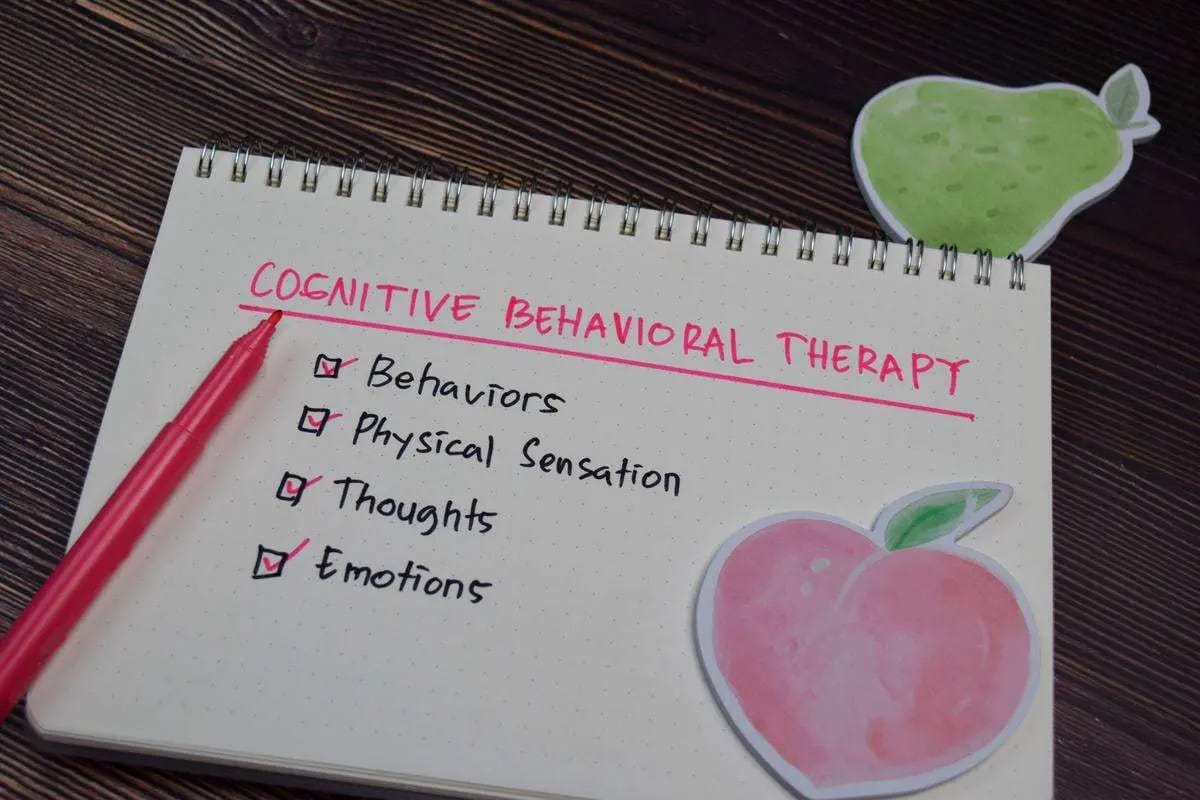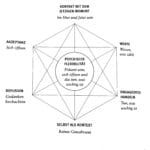Ever feel like your mind is playing tricks on you, making you feel anxious or down for seemingly no reason? Negative thoughts can be powerful, but you don’t have to let them control you. Cognitive Behavioral Therapy (CBT) is like a user manual for your mind, showing you how to take charge of your thoughts and start feeling better. This article breaks down the basics of CBT, explaining the link between thoughts, feelings, and actions, and how understanding this connection can lead to a happier, healthier life. We’ll explore how CBT gives you practical tools to challenge negative thoughts and create positive change.
How Does CBT Work?
Cognitive Behavioral Therapy (CBT) is built on a simple yet powerful idea: your thoughts, feelings, and behaviors are all interconnected. A shift in one can influence the others. This interconnectedness is the foundation of CBT. It suggests that by changing how we think, we can influence how we feel and what we do. It’s not about ignoring problems, but about tackling them from a different perspective.
The Cognitive Model: Your Mind’s Map
At CBT’s core lies the cognitive model. This model suggests that it’s not events themselves that directly cause our emotional responses, but rather our interpretations of those events. Our thoughts about what happened, not necessarily what actually happened, trigger our feelings. Two people waiting in a long grocery line illustrate this perfectly. One might feel frustrated, thinking, “This is taking forever!” Their blood pressure rises, and patience wears thin. The other person, however, might see the wait as a chance to relax and plan dinner. Same situation, two drastically different reactions. The principle underlying CBT? Our thoughts primarily drive our feelings and behaviors. By changing our thoughts, we can change how we feel and what we do. For more about refining writing and expressing thoughts concisely, you can explore tips on which sentence should be revised to reduce wordiness.
Learned Behaviors: Rewriting Your Scripts
Many of our behaviors, especially problematic ones, are learned. Just as we learn to ride a bike, we learn to react to stress. Do you procrastinate when deadlines loom? Isolate yourself when feeling down? These are likely learned responses. CBT helps you identify these behaviors and, like revising a script, develop healthier coping mechanisms. This might involve learning relaxation techniques, problem-solving skills, or better communication strategies. If you’re interested in musical notation, you might explore the concept of treble clef ledger lines — another example of learned patterns.
Working with Your Therapist: A Collaborative Approach
CBT is focused and goal-oriented, usually involving a limited number of sessions. It’s highly collaborative. You and your therapist work together, setting achievable goals and creating a plan to reach them. Your therapist acts as a guide, helping you understand the CBT model and learn practical skills for daily life. They’re like a coach, supporting you as you manage your thoughts and emotions.
Becoming Your Own Therapist: Long-Term Well-being
CBT emphasizes self-sufficiency. The goal isn’t just temporary relief but equipping you with tools for long-term mental wellness. Imagine having a mental toolbox filled with techniques to challenge negative thoughts, manage stress, and cope with difficult situations. That’s CBT’s ultimate goal: empowering you to become your own therapist.
Key CBT Techniques
CBT employs various techniques to help you reshape your thoughts and behaviors:
Challenging Negative Thoughts: Questioning Your Inner Critic
Cognitive restructuring is a key CBT technique. It involves identifying negative thoughts and putting them on trial. Are these thoughts based on facts or assumptions? Are they helpful or harmful? By challenging these thought distortions, you can gradually replace them with more balanced perspectives.
Behavioral Activation: Breaking Free from Avoidance
When feeling down, it’s tempting to withdraw. But avoidance reinforces negative patterns. Behavioral activation encourages engagement in activities, even small ones, that bring pleasure or accomplishment. Going for a walk, spending time with loved ones, or taking a bath can shift your mood and break the cycle of avoidance.
Exposure Therapy: Facing Your Fears
For those struggling with anxiety, especially phobias, exposure therapy is a powerful tool. This involves gradually confronting feared situations in a safe environment. Someone with a fear of flying might start by looking at pictures of airplanes, eventually working up to taking a short flight. This gradual exposure reduces anxiety and restores a sense of control. It helps demonstrate that the fear, while real, isn’t as dangerous as perceived.
The Power and Potential of CBT
CBT offers a powerful path toward greater self-awareness, improved emotional regulation, and lasting positive change. Progress takes time and effort, but with dedication and support, CBT can help you build a more resilient and fulfilling life. Ongoing research continues to explore new applications of CBT and its potential when combined with other therapies. While much has been discovered, there’s still more to learn about the intricacies of the mind and the effectiveness of various approaches. CBT may not be suitable for everyone, and individual experiences can vary. It’s important to approach CBT with realistic expectations and discuss any concerns with a qualified therapist.
- Discover Long Black Pepper: Flavor & Health Benefits - April 25, 2025
- Shocking Twists: The Grownup Review: Unreliable Narration - April 25, 2025
- A Quiet Place Book vs Movie: A Deep Dive - April 25, 2025
















